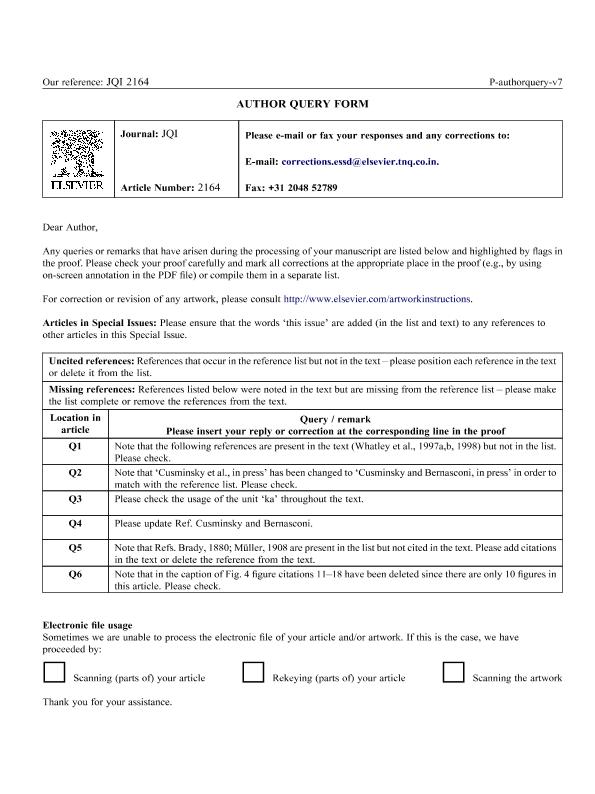Artículo
Pleistocene calcareous macro-and-microfossils from the southernmost tip of South America as environmental proxies during the last interglacial period
Gordillo, Sandra ; Cusminsky, Gabriela Catalina
; Cusminsky, Gabriela Catalina ; Bernasconi, Emiliana
; Bernasconi, Emiliana ; Ponce, Juan Federico
; Ponce, Juan Federico ; Rabassa, Jorge Oscar
; Rabassa, Jorge Oscar ; Pino, Mario
; Pino, Mario
 ; Cusminsky, Gabriela Catalina
; Cusminsky, Gabriela Catalina ; Bernasconi, Emiliana
; Bernasconi, Emiliana ; Ponce, Juan Federico
; Ponce, Juan Federico ; Rabassa, Jorge Oscar
; Rabassa, Jorge Oscar ; Pino, Mario
; Pino, Mario
Fecha de publicación:
12/2009
Editorial:
Pergamon-Elsevier Science Ltd
Revista:
Quaternary International
ISSN:
1040-6182
Idioma:
Inglés
Tipo de recurso:
Artículo publicado
Clasificación temática:
Resumen
Macro-and-microfossils, including molluscs, cirripeds, echinoids, foraminifers and ostracods area significant component of a Pleistocene marine unit located along the southern coast of the BeagleChannel, on Navarino Island, Chile. This paleontological record represents the richest and most diversemacro-and-micro assemblage recovered from Pleistocene southern South America. In total, 97 taxa wereidentified: 34 molluscs, 57 foraminifers, and 6 ostracods. They comprise a mixture of specimensinhabiting shallow marine environments characterized by strong bottom currents and belonging todifferent local communities associated with the spatial heterogeneity in this basin. The taxonomiccomposition of this paleofauna shows remarkable similarities with present-day fauna, indicating thatboth groups developed under similar environmental conditions. However, slight different climaticconditions at the age of deposition cannot be ruled out. As well, an ecosystem transition towards a trulymarine environment with high number of taxa was recognized. Finally, a Hiatella-cirriped assemblagedeserves special attention since the polymorphic shell of fossil and living Hiatella is used as a paleo-environmental tool. In this regard, the small size of Hiatella in the studied marine unit is best related toits mode of life as a nestler within empty tests of barnacles, which apparently served as microenvi-ronments for this species. Nevertheless, more geochemical data on living and fossil Hiatella shells fromthe Beagle Channel will be necessary to test the suitability of using this species to evaluate paleo-temperatures and other sea water variations during the Quaternary.
Palabras clave:
Pleistocene
,
Southernmost South America
,
Marine Mollusks
,
Last Interglacial
Archivos asociados
Licencia
Identificadores
Colecciones
Articulos(CADIC)
Articulos de CENTRO AUSTRAL DE INVESTIGACIONES CIENTIFICAS
Articulos de CENTRO AUSTRAL DE INVESTIGACIONES CIENTIFICAS
Articulos(CICTERRA)
Articulos de CENTRO DE INVEST.EN CS.DE LA TIERRA
Articulos de CENTRO DE INVEST.EN CS.DE LA TIERRA
Articulos(INIBIOMA)
Articulos de INST. DE INVEST.EN BIODIVERSIDAD Y MEDIOAMBIENTE
Articulos de INST. DE INVEST.EN BIODIVERSIDAD Y MEDIOAMBIENTE
Citación
Gordillo, Sandra; Cusminsky, Gabriela Catalina; Bernasconi, Emiliana; Ponce, Juan Federico; Rabassa, Jorge Oscar; et al.; Pleistocene calcareous macro-and-microfossils from the southernmost tip of South America as environmental proxies during the last interglacial period; Pergamon-Elsevier Science Ltd; Quaternary International; 221; 12-2009; 159-174
Compartir
Altmétricas



